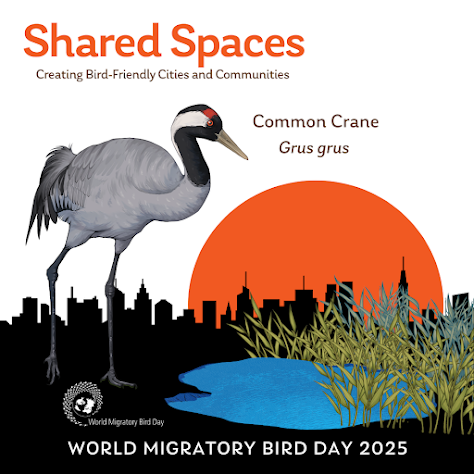Joint message by the heads of the founding partners of the World Migratory Bird Day 2025 campaign.
Watch the Joint video message by: Amy Fraenkel, Executive Secretary of the Convention on the Conservation of Migratory Species of Wild Animals (CMS) . Jacques Trouvilliez, Executive Secretary of the Agreement on the Conservation of African-Eurasian Migratory Waterbirds (AEWA) . Susan Bonfield, Director of the Environment for the Americas (EFTA) . Jennifer George, Chief Executive of the East Asian-Australasian Flyway Partnership (EAAFP) .








